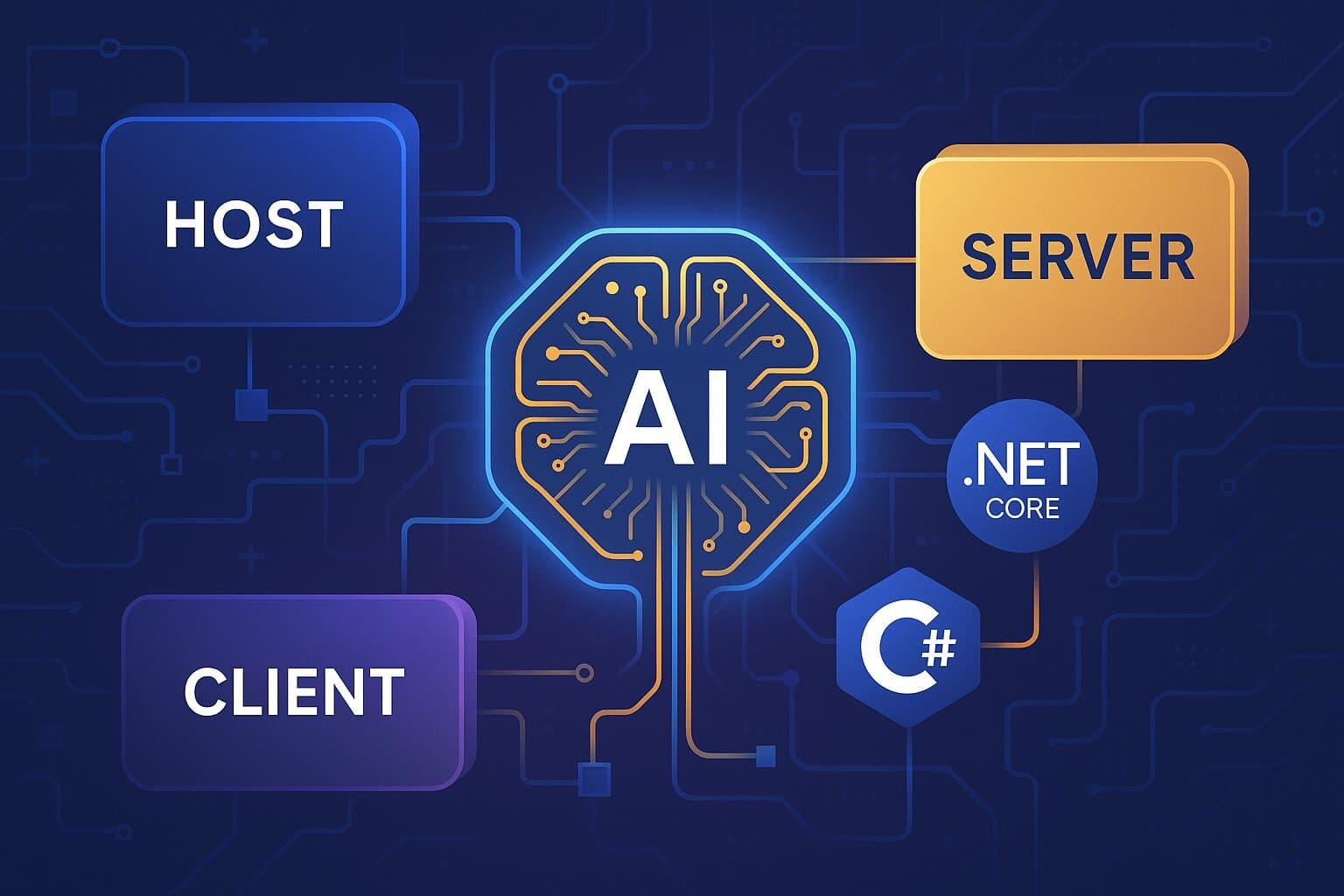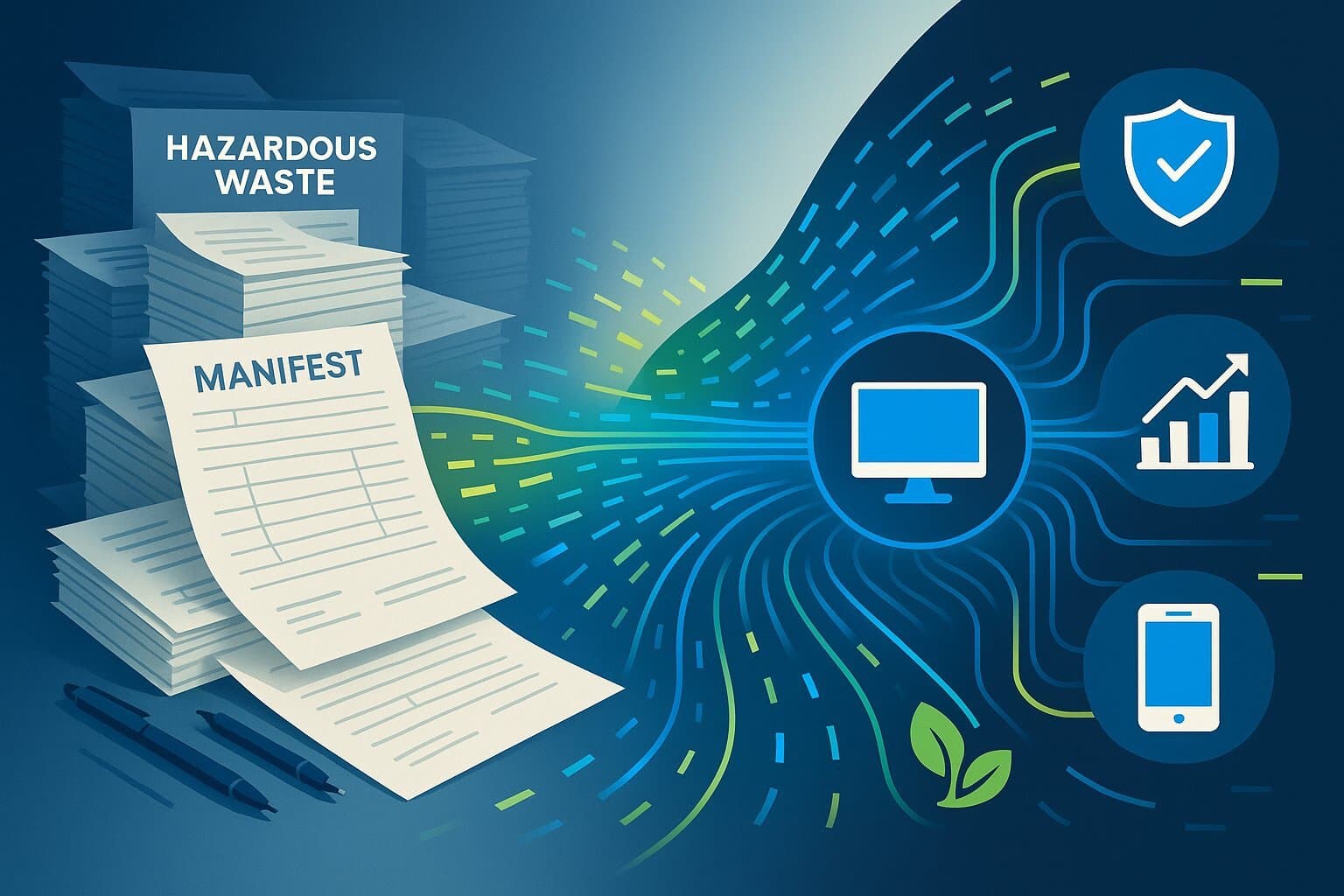Data Management & Governance
By: Bryan Reynolds | 03 December, 2025

The article explores how artificial intelligence is transforming the real estate industry across all stages of the sales funnel, from predictive prospecting to closing deals, while also optimizing brokerage operations. It offers strategic insights into adopting AI, whether through off-the-shelf solutions or custom development, to gain competitive advantages.
Read MoreBy: Bryan Reynolds | 17 November, 2025

This article explores the 'Automation Paradox,' the phenomenon where increasing adoption of artificial intelligence and automation in enterprise settings amplifies—rather than reduces—the critical need for highly skilled human talent. Drawing from historic case studies and modern research, it warns leaders that over-reliance on automation can result in cognitive complacency, eroded expertise, and systemic risk if human oversight, judgment, and continuous upskilling are neglected. The piece provides frameworks for balancing automated, augmented, and uniquely human work, emphasizes the necessity for robust AI governance, and offers a roadmap for strategic upskilling to maximize ROI and competitive advantage in an AI-powered future.
Read MoreBy: Bryan Reynolds | 11 November, 2025

This article explores the transformative impact of AI-powered Conversation Intelligence (CI) on enterprise operations, highlighting its applications in sales, customer service, marketing, and product development. It discusses the underlying technology, market growth, integration strategies, and decisions between buying or building custom solutions to leverage customer conversations for strategic advantage.
Read MoreBy: Bryan Reynolds | 31 October, 2025

This article provides a comprehensive guide to the Model Context Protocol (MCP) for.NET Core developers, outlining its architecture, roles, and implementation strategies, along with best practices for security, tool design, and deployment.
Read MoreBy: Bryan Reynolds | 23 October, 2025

This comprehensive guide empowers CFOs to cut through the AI hype and make pragmatic, finance-driven investment decisions. It covers the essential importance of data readiness, analyzes three core AI investment models (embedded, specialist, and custom-built), and provides a rigorous seven-question due diligence checklist to de-risk AI initiatives. Using real-world use cases and quantifiable ROI, the article demonstrates how successful AI adoption can drive operational efficiency, risk management, and competitive differentiation. It concludes with actionable steps for finance leaders to assess data maturity, launch high-impact pilot projects, and engage expert technology partners for enduring strategic advantage.
Read MoreBy: Bryan Reynolds | 15 October, 2025

This article provides a comprehensive guide for CTOs and technology leaders on how to design, build, and monetize APIs as strategic products in the rapidly expanding API economy. It explores the paradigm shift from viewing APIs as technical integrations to managing them as valuable product assets, covering essential topics such as the API-as-a-product mindset, API product management, design best practices, technology stacks for scalable API development, governance frameworks, security strategies, and revenue models. The article also highlights future trends like 5G, AI, and Web3, demonstrating how API excellence positions organizations for digital innovation and competitive advantage.
Read MoreBy: Bryan Reynolds | 09 October, 2025

Elon Musk's Grokipedia aims to revolutionize the digital knowledge ecosystem with AI-powered curation, challenging Wikipedia, but faces credibility challenges and strategic implications for organizations.
Read MoreBy: Bryan Reynolds | 03 October, 2025

This in-depth guide explores the imperative of hyper-personalization for modern businesses, outlining why conventional personalization tactics are failing, the significant ROI and revenue opportunities of 1-to-1 customer experiences, and the essential technology stack required to deliver them at scale. Key topics include building a unified data foundation, leveraging AI and machine learning for predictive insights, activating personalized journeys via marketing automation, and the strategic benefits of developing a custom personalization engine. The article also provides an actionable roadmap for implementation and addresses key organizational considerations to bridge the gap between company capabilities and rising customer expectations.
Read MoreBy: Bryan Reynolds | 22 September, 2025

This article explores the current state of AI adoption in corporate America, revealing a dramatic surge in investment paired with an alarming rate of failed AI projects and pilot abandonments. It identifies four core reasons behind this phenomenon—poor data quality, inability to scale prototypes, lack of strategic alignment, and over-reliance on generic tools—while providing actionable advice for business leaders to shift from hype-driven experimentation to focused, outcome-based AI initiatives. The piece offers a practical executive playbook for turning AI investments into measurable business value, including decision frameworks, agile development approaches, and critical steps for immediate action
Read MoreBy: Bryan Reynolds | 04 September, 2025

This article outlines the urgent need for enterprises to rethink software asset management in the era of artificial intelligence (AI), introducing the AI Governance and Asset Management (AI-GAM) framework. It argues that traditional approaches to software asset management are inadequate for overseeing AI assets—which include models, data, and infrastructure—due to their dynamic, high-risk nature. Integrating global governance standards such as the EU AI Act, NIST RMF, and OECD AI Principles, the article presents a phased roadmap and maturity model to build ethical, scalable, and regulatory-compliant AI programs. By embedding governance within the lifecycle of AI asset management, organizations can minimize risk, maximize ROI, and position themselves for long-term strategic advantage.
Read MoreBy: Bryan Reynolds | 27 August, 2025

This article explores the transformative shift in hazardous waste management driven by tightening global regulations, expanding corporate liabilities, and the rise of digital technologies. It details critical regulatory changes such as the EPA's e-Manifest system, Extended Producer Responsibility (EPR), and the EU's CSRD, examining their interconnectedness and the operational risks of non-compliance. The article then outlines the necessity of a centralized digital compliance platform, field-ready mobile applications, and gamified employee training to ensure accurate data capture, operational efficiency, and organizational resilience. By quantifying potential ROI and showcasing real-world examples, the article underscores that a strategic, tech-enabled approach is now essential for both regulatory compliance and competitive advantage.
Read MoreBy: Bryan Reynolds | 20 August, 2025

This in-depth article examines the challenges and hidden costs energy companies face due to inefficient and paper-based document management systems. It outlines the operational, financial, and compliance risks of relying on outdated processes, and demonstrates how custom-built document management solutions provide superior value over off-the-shelf alternatives. The article details a practical, phased blueprint for successful digital transformation and highlights the substantial ROI and strategic advantages of tailored technology. Real-world examples and implementation guidance make this a must-read for executives seeking operational excellence and competitive advantage in the energy sector.
Read MoreBy: Bryan Reynolds | 11 August, 2025

This article provides a comprehensive executive guide to Google’s NotebookLM, a next-generation AI research assistant designed for secure, verifiable, and proprietary enterprise knowledge work. It details NotebookLM’s 'grounded AI' architecture, which ensures outputs are derived solely from user-provided documents, offering robust data privacy and transparent citations. The article highlights unique multimedia features—including AI-generated audio podcasts and video briefings—compares NotebookLM to major competitors like ChatGPT and Microsoft 365 Copilot, and outlines strategic use cases for sales, training, R&D, and more. It also addresses deployment strategies, security considerations for CISOs, tiered pricing, and recommended adoption steps to maximize ROI while minimizing risk.
Read MoreBy: Bryan Reynolds | 02 August, 2025

Explore the paradigm shift from CRUD to Event Sourcing—an architectural pattern focused on capturing a complete, immutable history of data changes. Discover the core mechanics of event sourcing, its real-world benefits for auditability and business insight, inherent complexities, and practical guidance on when to adopt this powerful approach. Ideal for architects and technical leaders designing scalable, audit-ready systems.
Read MoreBy: Bryan Reynolds | 25 July, 2025

This in-depth article explores how artificial intelligence, specifically technologies like Retrieval-Augmented Generation (RAG) and vector embeddings, can unlock decades of untapped institutional knowledge trapped within corporate documents and siloed systems. It details the hidden costs of "knowledge chaos" across departments, the tangible ROI of AI-powered knowledge management, and the technical principles that make it possible. The article also provides a strategic roadmap for executive leaders considering implementation, including the build vs. buy dilemma, practical first steps, and essential guidance on data security and governance. By leveraging AI, companies can transform their scattered, inaccessible information into a powerful, centralized asset that drives efficiency, innovation, and competitive advantage.
Read MoreBy: Bryan Reynolds | 19 July, 2025

Modern AI systems, particularly those leveraging large language models, introduce non-determinism—variable outputs from the same inputs—posing major risks to consistency, reliability, and auditability in enterprises. This article explains the underlying technical causes, the real-world business implications in sectors like finance, healthcare, and marketing, and offers an actionable framework for managing AI unpredictability. Learn how to build resilient, reproducible, and well-governed AI deployments that turn AI's power into sustained business value.
Read MoreBy: Bryan Reynolds | 14 July, 2025

This in-depth analysis explores Databricks’ Data Intelligence Platform, dissecting its open lakehouse architecture, core components like Delta Lake, Unity Catalog, MLflow, and Photon, and its unique positioning in the data and AI ecosystem. It highlights the platform’s strengths in unifying data engineering, analytics, and machine learning workflows while providing multi-cloud flexibility across AWS, Azure, and GCP. The article evaluates Databricks’ key differentiators, strategic integrations, and competitive dynamics against rivals like Snowflake, Redshift, BigQuery, and native ML platforms. It concludes by assessing the platform's future outlook, challenges, and enterprise relevance.
Read MoreBy: Bryan Reynolds | 03 July, 2025

This comprehensive strategic guide explores the rapidly evolving landscape of modern data warehousing and its deep integration with Artificial Intelligence (AI). It examines key cloud-native platforms—Snowflake, Google BigQuery, Amazon Redshift, Azure Synapse, Oracle ADW, and Databricks—highlighting their unique architectures, strengths, and AI/ML capabilities. The article simplifies complex warehousing concepts for non-experts, contrasts traditional ETL vs. ELT workflows, and offers a detailed matrix comparing AI functionalities across platforms. It concludes with strategic guidance on platform selection and future trends like real-time analytics, lakehouse convergence, and AI-driven governance, positioning data warehousing as a cornerstone of intelligent, agile enterprises.
Read MoreBy: Bryan Reynolds | 02 July, 2025

This comprehensive guide demystifies the concept of data warehousing for business leaders, illustrating how consolidating disparate data into a centralized repository enables more informed, efficient, and strategic decision-making. The article explains the core components—such as ETL, SQL, OLAP vs. OLTP systems—and emphasizes the role of data warehouses in enabling business intelligence, historical analysis, and advanced analytics. Through real-world examples from retail, healthcare, and finance, it showcases how data warehouses transform raw data into actionable insights and future-proof a business’s growth strategy.
Read MoreBy: Bryan Reynolds | 24 June, 2025

This comprehensive article tackles the widespread business issue of inconsistent and duplicated customer data, examining its root causes, financial and operational consequences, and strategic remediation tactics. It outlines a three-phase resolution framework: initial assessment, intensive data cleansing, and long-term preventative practices including master data management, data governance, stewardship, and enabling technology. With practical guidance, actionable steps, and visual tables, the piece serves as a detailed roadmap for transforming flawed data environments into trustworthy, streamlined, and strategic data ecosystems.
Read MoreBy: Bryan Reynolds | 20 June, 2025

This comprehensive guide explores the pervasive challenges and high costs associated with inefficient data entry processes and outlines a strategic framework for organizations to optimize them. By identifying root causes, standardizing workflows, leveraging automation technologies like OCR, RPA, and AI, and empowering employees through training and ergonomic design, businesses can dramatically improve data accuracy, reduce operational costs, and enhance decision-making. The article emphasizes the importance of a coordinated, phased approach and continuous performance monitoring to transform data entry from a liability into a strategic advantage.
Read MoreBy: Bryan Reynolds | 09 June, 2025

This comprehensive analysis explores Workato, a leading enterprise automation and iPaaS (Integration Platform as a Service) solution, examining its capabilities, architectural advantages, and role in data integration. The report compares Workato with Boomi and ServiceNow, highlighting its strengths in ease of use, cloud-native design, robust security, and integrated AI features. Workato supports ETL, ELT, and Reverse ETL workflows, positioning it as a powerful tool for both application and data integration. Its low-code approach empowers both IT and business users, while its flexibility allows organizations to streamline operations, eliminate silos, and activate data-driven automation across the enterprise.
Read MoreBy: Katarina Rudela | 25 October, 2022

Data migration is often a process full of complexities and hassles. In order to help you migrate your organization's data to the cloud in the most efficient and secure way possible, we'll take a look at the data migration strategies and tools that you will want to employ as well as the data migration risks that need to be mitigated. Check out our latest blog to learn more about the strategies, tools, and risks you need to be aware of heading into your next data migration project.
Read MoreBy: Katarina Rudela | 28 June, 2022

Environment, health and safety (EHS) software is becoming more common due to the increasing importance of these issues. Many companies have now implemented this type of software, even those that don’t specialize in EHS. For those that do, tightening regulations and emerging technologies often mean that an organization benefits from custom-built EHS software. These solutions include a range of capabilities, depending on the user’s specific requirements.
Read MoreBy: Katarina Rudela | 05 January, 2022

Our latest post covers trends in software development for 2022. The rapid rate of change makes it more challenging to predict trends in this space than other sectors, especially when you consider the changes that occurred this year. However, some basic tendencies will serve as the basis of change for the next year. These trends derive from both technological advances and socioeconomic changes, many of which are the result of the COVID-19 pandemic that began sweeping the globe in 2020. Some of the most significant software development trends to watch for in 2022 include cloud technology and big data security.
Read More

